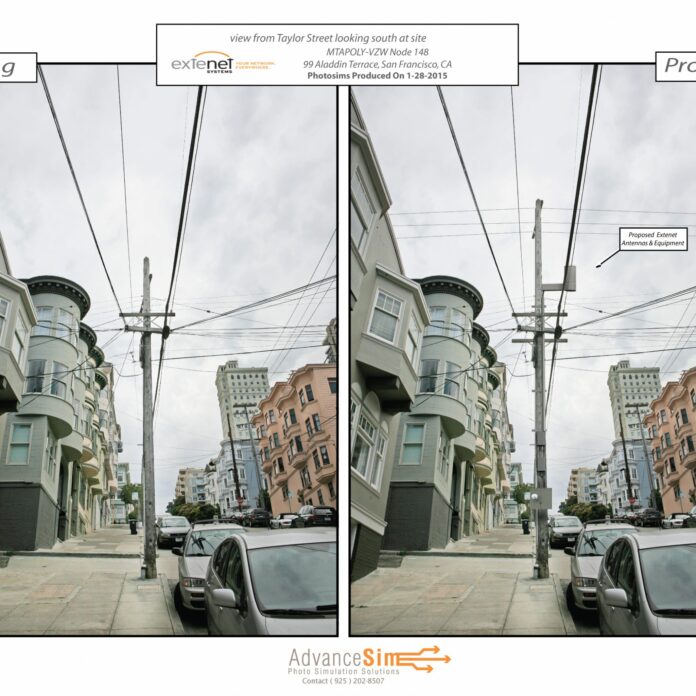Super Bowl, usage growth prompt Verizon rollout of small cells in San Francisco; carrier uses C-RAN architecture
Verizon Wireless said it negotiated the right to place small cells on 400 San Francisco light poles and utility poles by moving “the brains of the network” to remote locations.
“What’s unique to this deployment for us is that it’s going be a C-RAN-type configuration,” said Jake Hamilton, engineering director for Verizon Wireless’ Northern California region. “Our baseband units, or the brains of our network, will be remotely housed in hub locations and we use dark fiber to connect out to the city … poles on the streets. That really allows us to minimize how much equipment we put on the poles, which was kind of a requirement from … the planning department.”
Hamilton said that each pole will support two Ericsson micro radio units, and one small antenna measuring roughly 2 feet by 15 inches or less. One radio will support Verizon Wireless 1.7/2.1 GHz frequency band, and one will support the 1.9 GHz frequency band. At 5 watts per channel, these radios are said to require less power and space than those used in traditional cell sites.
Racing the clock
Hamilton said that February represents a deadline of sorts because San Francisco expects a million visitors for the next Super Bowl. He said that many of the small cells will be in place by then even if the deployment is not complete.
Verizon Wireless has permits to deploy on 50 to 60 wooden utility poles so far. The carrier has also won tentative approval from the Department of Public Works for 80 more city-owned steel poles. That tentative approval triggers a mailing to local businesses and residents in the area to tell people about the small cells.
Hamilton said that most questions from the community so far focus on health concerns or aesthetic concerns. He said people are much less worried about the small cells on the city-owned steel poles than on the wooden utility poles, because the design on the steel poles is cleaner.
“We have to prioritize considerably right now,” said Hamilton. “I don’t think we’ll have all 400 on air, but we’ll have the majority on air by the time the Super Bowl comes, so we’re working carefully to get the right sites.”
Even without the Super Bowl, San Francisco is a market that requires more network densification than Verizon Wireless’ macro network can provide.
“We targeted San Francisco because it is … one of the premiere markets in terms of growth, economic development and the number of millennials living here,” said Hamilton. “We’ve seen traffic doubling year over year so it’s something that we’ve definitely got to stay ahead of, and this will allow us to do so, at least in San Francisco.” He said the 400 cell sites will be concentrated in the city’s northeast quadrant: The Tenderloin, North Beach, the financial district, and south of Market Street.
Two different deployment models
The deployments north of Market Street are being managed by ExteNet Systems, and Verizon Wireless is managing the deployments south of Market Street with construction partner Modus.
“It was really kind of a trial, self-perform versus a traditional turnkey solution with ExteNet where they lease the location,” said Hamilton. “With small cells being a fairly new solution for us, we just did it two different ways so we could test the pros and cons of each solution.”
“Control is a lot better when we manage it ourselves, but we find ourselves kind of micro-managing all of it,” Hamilton said. “[We] have to make sure both companies are in sync in terms of what they’re filing and how they’re filing it because this is all new to the city as well so we’re learning and creating a process as we go. … We have to teach each team the same process so that it doesn’t confuse the city.”

